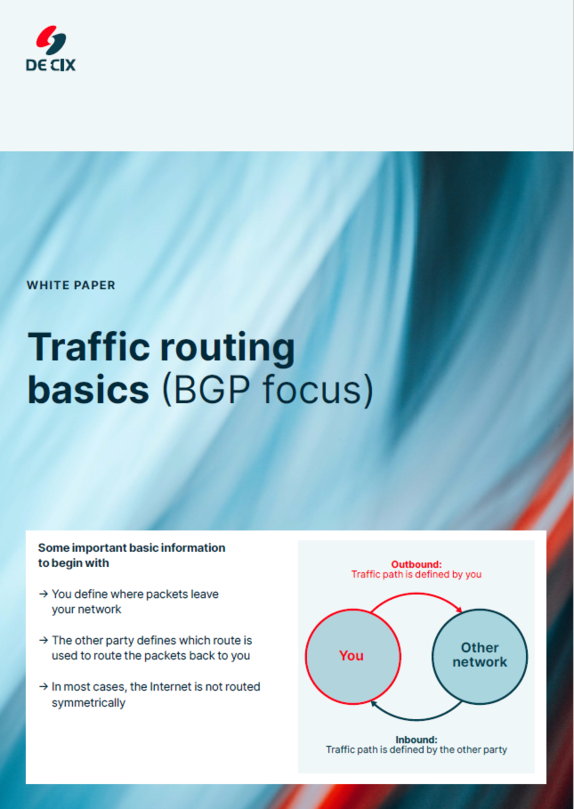Download our white paper to learn more about inbound and outbound routing, how a router decides which path is best, localpref, MED and AS-PATH rules, and best practices.
Here is a preview:
Basic information:
- You define where packets leave your network
- The other party defines which route is used to route the packets back to you
- In most cases, the Internet is not routed symmetrically
Routing outbound
Routing packets from your network to the other network are defined by you.
- Your router sends outgoing packets on the basis of its routing table
- The routing table is built up based on learned (=incoming) prefixes from neighbors
- Prefixes are typically learned from:
- Transit sessions
- Peering sessions (IXP or PNI)
- Customer sessions
- If you have more than one router, your routers synchronize their learnings via IBGP
First, you have to learn a route from outside; then you can use it to send packets there.
- In an advanced network, your router sees the prefixes from the target network on different paths
- As there is more than one way of learning prefixes, you have to define where the outbound packet should be sent
Fill in the form to download the white paper!
